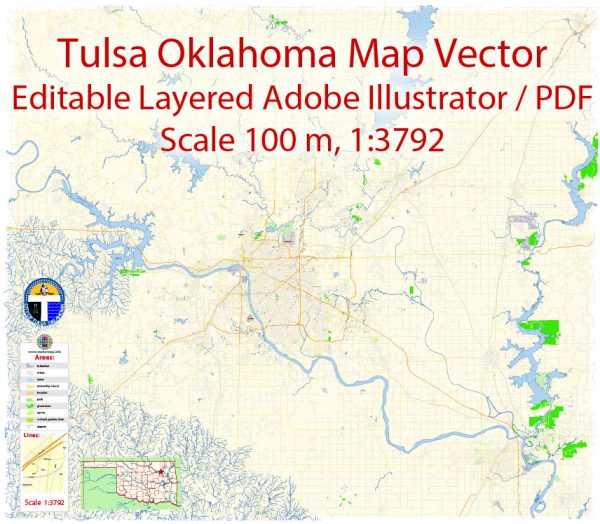Tulsa, Oklahoma, has a complex and significant history of urban development, shaped by factors such as oil exploration, economic growth, cultural diversity, and challenges such as the 1921 Tulsa Race Massacre. Here’s an overview of the key phases in Tulsa’s urban evolution:
Early Settlement and Oil Boom:
Tulsa’s history dates back to the 1830s when it was a small settlement in Indian Territory. The city experienced a significant boom in the early 20th century due to the discovery of oil. The Glenn Pool oil field, located near Tulsa, sparked an oil rush, leading to a rapid increase in population and economic development.
1921 Tulsa Race Massacre:
One of the darkest chapters in Tulsa’s history is the 1921 Tulsa Race Massacre. The Greenwood District, a prosperous African American community often referred to as “Black Wall Street,” was destroyed in an attack by a white mob. The massacre resulted in the loss of lives, homes, and businesses and had a lasting impact on the city’s social and economic fabric.
Rebuilding and Growth:
Despite the devastating impact of the Race Massacre, Tulsa saw a period of rebuilding and growth in the following years. The city’s economy continued to benefit from the oil industry, and new developments emerged in the Greenwood District.
Economic Diversification:
Tulsa’s economy diversified beyond oil, with the establishment of aviation and aerospace industries. Companies like American Airlines and Spartan Aircraft Company had a significant presence in the city. The city’s economy also benefited from the manufacturing and transportation sectors.
Mid-20th Century Urbanization:
During the mid-20th century, Tulsa experienced urbanization and suburbanization trends common in many American cities. The development of the interstate highway system, including the construction of I-44, influenced the city’s layout and transportation infrastructure.
Cultural Development:
Tulsa has a rich cultural scene, and the development of cultural institutions became prominent in the latter half of the 20th century. The Tulsa Performing Arts Center, the Philbrook Museum of Art, and the Gilcrease Museum are notable examples of cultural contributions to the city.
Oil Bust and Economic Challenges:
In the 1980s, Tulsa faced economic challenges due to the decline in oil prices, leading to an oil bust. This period resulted in job losses and a slowdown in economic growth. However, the city worked to diversify its economy and attract new industries.
Riverfront Development:
Tulsa’s riverfront development along the Arkansas River has been a focus for urban revitalization efforts. The creation of the Gathering Place, a large public park, has contributed to the enhancement of the city’s recreational and cultural offerings.
Contemporary Urban Development:
In recent years, Tulsa has witnessed a renewed focus on downtown development and revitalization. The Brady Arts District, once a neglected area, has undergone transformation with the establishment of art galleries, restaurants, and cultural venues.
Resilience and Community Engagement:
Tulsa’s history has been marked by resilience in the face of challenges. Community engagement and efforts to address the historical trauma of the 1921 Tulsa Race Massacre have gained prominence, with initiatives aimed at acknowledging and reconciling the past.
Tulsa’s urban development reflects a complex interplay of economic booms, challenges, cultural contributions, and efforts toward revitalization and community engagement. The city continues to evolve, facing both the opportunities and responsibilities associated with its historical legacy.


 Author: Kirill Shrayber, Ph.D.
Author: Kirill Shrayber, Ph.D.